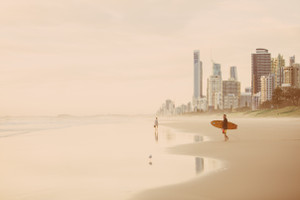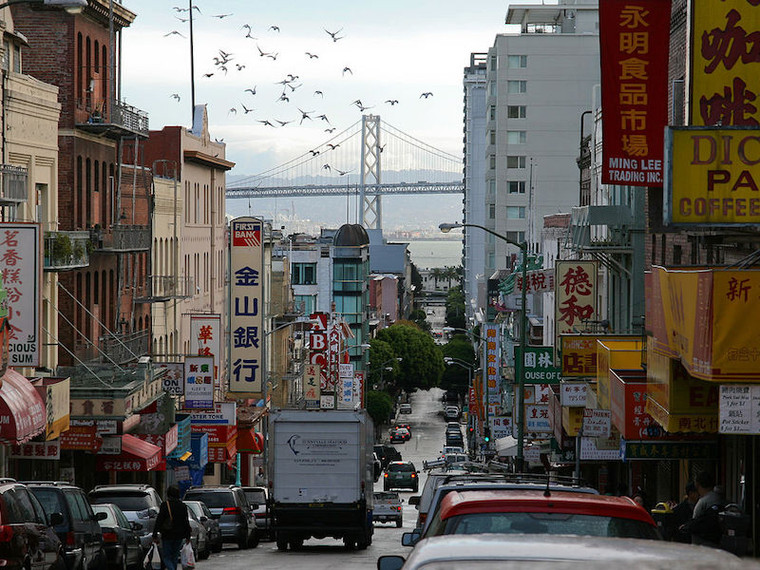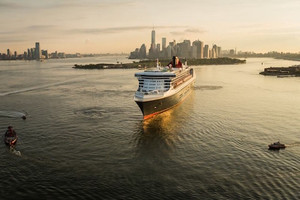
In honour of Chinese New Year, which in 2018 takes place on Friday, February 16, we’ve put together a collection of our favourite Chinatowns around the world. Having visited many beyond this list, we’ve discovered there are some notable ones which are well worth visiting for various reasons, and even more so when the Chinese New Year celebrations take place.
San Francisco
We love just about everything about San Francisco from the cuisine to the hills and its famous fog, also that the city claims to have the world's oldest Chinatown, as well as the largest Chinatown outside of Asia. It all began back in 1848 with arrival of three Chinese immigrants on the American brig, the Eagle; fast forward to 2018, and the Chinese are an integral part of San Francisco with Chinatown one of the city's top tourist attractions. Besides having more than 300 authentic restaurants serving great food, this Chinatown packed with other attractions. Historic Grant Avenue at the junction of Bush Street is where you start exploring; it’s home to the southern gateway to Chinatown, beyond which you'll find bilingual street signs and myriad of shops selling produce, herbal medicines, fabrics, and souvenirs as well as tea shops and Chinese bakeries.
Insider Tip: Bring your appetite and aim to sample either traditional Peking duck with pancakes, or dim sum. If you have an evening free, book yourself on a tour with SF Chinatown Ghost Tours which recounts tales of San Francisco Chinatown's spookyl past and present.
Vancouver
At first we were surprised at the scale of the Canadian city’s Chinatown, established over a hundred years ago, and located next the business CBD, but it's no surprise given that Vancouver is North America's most Asian city. After the British signed the Joint Declaration in 1984, promising to return Hong Kong to Mainland China in 1997, large numbers of Hong Kong Chinese emigrated to Vancouver in search of a new life and Chinatown grew with it. In 2011 the district was granted a National Historic Site, and there’s been an active revitalisation program underway to give the area a much needed face lift. Today it is home to restaurants and stores, a wide variety of other businesses, and a collection of historic and heritage designated buildings, such as the Chinese Times Building. It’s also home to more unusual sights including the Jimi Hendrix Shrine, a restaurant which used to belong to the rock star’s grandmother and where he lived as a young boy.
Insider Tip: If you have a sweet tooth, the Chinatown bakeries are fabulous, with offerings including pineapple buns, egg tarts and donuts. One of the most famous is New Town Bakery and Restaurant at 148 East Pender St.
Bangkok
We always make time to head to Chinatown in this city, particularly at night, when the area truly comes alive and resembles Hong Kong of a bygone era. The one kilometre strip of Yaowarat Road, and the adjacent Charoenkrung Road, is primarily a food haven for anyone who loves street-side cuisine. By day it’s busy with shoppers, with an abundance of gold shops, but spend time here and you’ll quickly realise there’s more to this Chinatown than food and jewellery. It’s also home to a number of key sights including Wat Traimit, home of largest solid gold Buddha in the world; revered statue dates back to 13th century, with Buddha seated on an altar and surrounded by traditional Thai golden arches. Food to put on your must-try list include dim sum, oyster omelettes, flat noodles in broth, fresh seafood, and homemade ice-cream.
Insider Tip: Save time to enjoy a cool drink and a panoramic view of Chinatown and beyond, including the winding Chao Phraya River, from the Grand China Princess revolving rooftop bar. A full revolution takes around two hours, and the adjacent Sky View 360 restaurant serves Thai, European, Japanese and Chinese with old fashioned waiters and waitresses.
London
Living in London for so many years, a trip to Chinatown was a regular outing; it’s conveniently located in the centre of the city, and Europe’s largest. Like many other Chinatowns, the one in London has a colourful history dating back to the late 18th century, although the Chinatown we know today started to take shape in the 1950s with the opening of a handful of Chinese restaurants. With other businesses and services moving in, by the 1960s and 1970s the neighbourhood fast became a hub for Chinese culture. London Chinatown sits between Soho, Leicester Square, Piccadilly Circus and Covent Garden, and is packed with restaurants, tea houses, produce and supermarkets and traditional Chinese doctors, and it’s home to the famous Ronnie Scott’s Jazz Club where music greats including Miles Davis and Ella Fitzgerald once performed.
Insider Tip: If you like the idea of fusing tasty dim sum with karaoke, head to Royal Dragon at 30 Gerrard Street, which has a famous karaoke room which is open until 3am.
Singapore
Singapore is home to a number of ethnic enclaves including Little India and Little Thailand, but Chinatown is one of our favourites for a variety of reasons. For one, it’s a bustling mix of old and new, filled with markets, traditional shops including goldsmiths and medicinal halls, as well as cool stores and cafes. You can buy souvenirs on Pagoda Street, eat out at a variety of hawker stalls, and visit sights including the Sri Mariamman Temple and the Jamae Mosque on South Bridge Street. Food is a key draw card, however, and a visit to Chinatown Food Street is a must; it’s a celebration of specialty dishes from main Chinese dialects and the different races in Singapore, all housed under one colourful roof.
Insider Tip: Save time to browse through the iconic medical oil shop Chop Wah On located on Upper Cross Street. Recommendations to take home include its popular balms and farm crocodile oils, complete with traditional packaging and healing properties.
Manila
Our spin through Binondo a few years ago was fleeting, but it certainly left an impression. This Chinatown dates back to 1584, established originally as a settlement for Chinese immigrants, and is located across the river from the walled city of Intramuros. Today it’s a thriving part of the Filipino capital, and home to a number of sights of interest. Most explorations of Binondo start on Carvajal Street, also called Umbrella Alley because of the abundance of umbrellas that protect the small street stalls. This is where you will find some of Manila’s best street food too. Sights to put on your list include Binondo Church, which dates back to 1596, and is one of the oldest places of Christian Worship, and the Buddhist temple, Kuang Kong, which is open to the public.
Insider Tip: Old Manila Walks operates the Big Binondo Food Wok tour, a three hour non-stop culinary experience which explores the most intimate alleys of Binondo.
- By:
- Ben Hall











